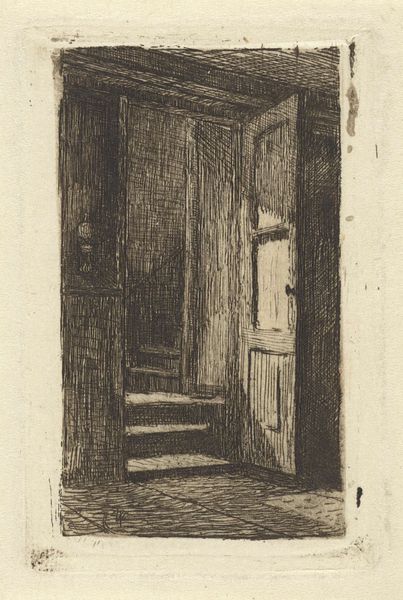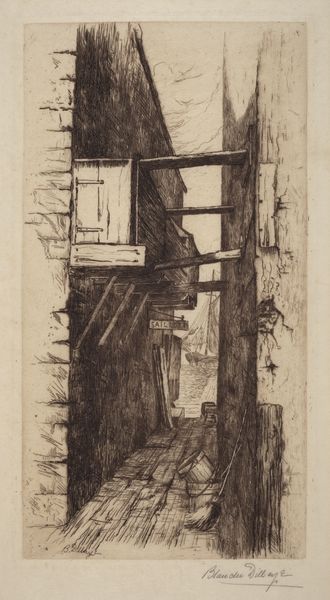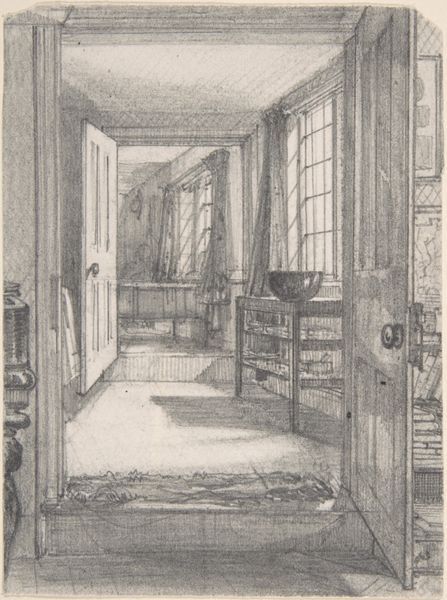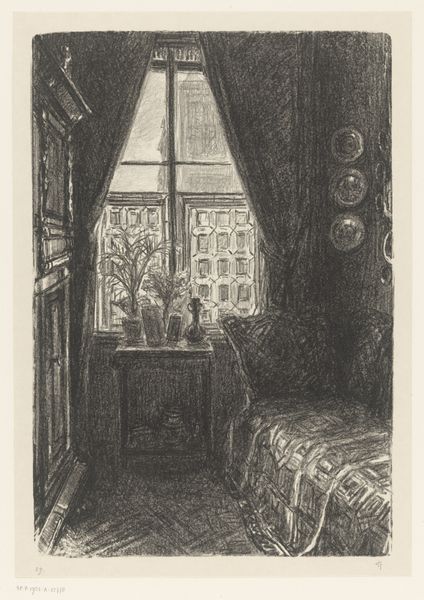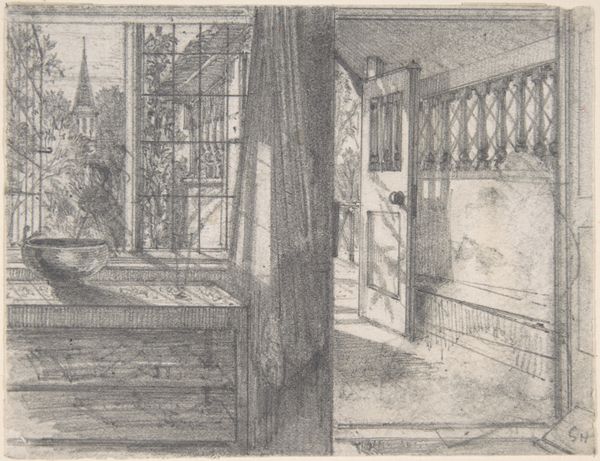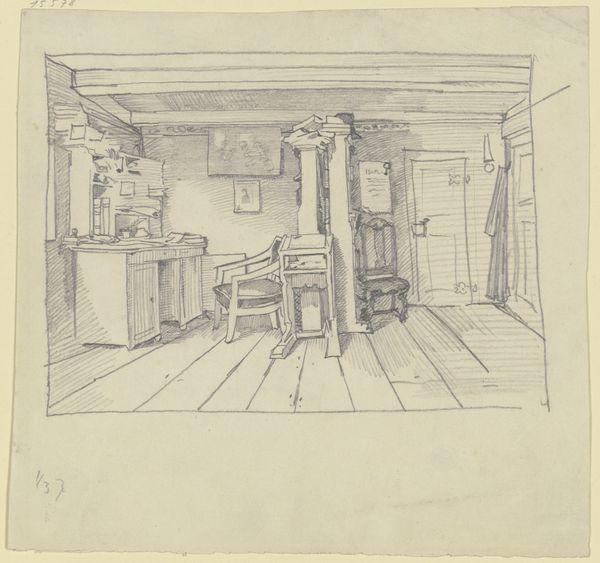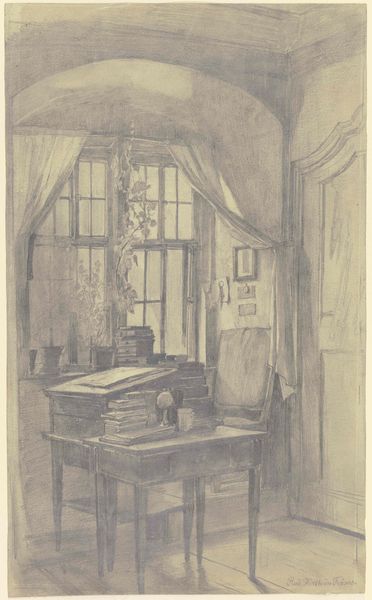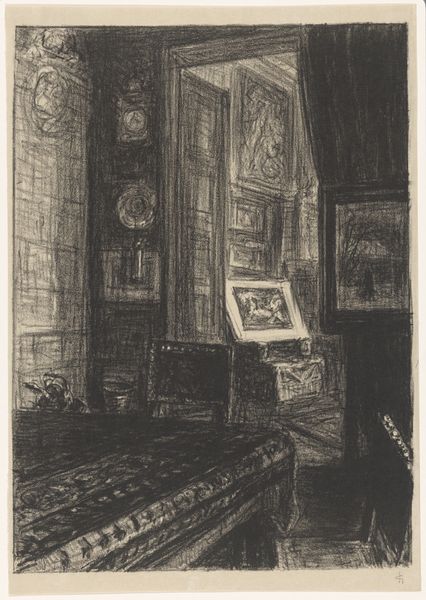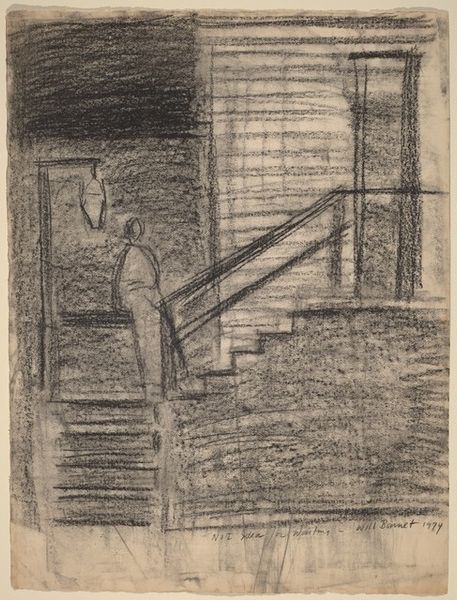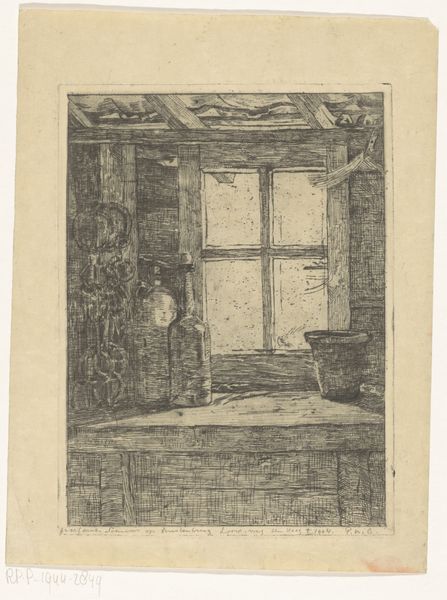
Copyright: National Gallery of Art: CC0 1.0
Curator: This is Joseph Pennell's "Hallway to Bed Room, Stenton," created around 1912 using ink and pencil. It presents an interior view, looking down a hallway and into a bedroom. Editor: It’s a remarkably intimate scene. The doorway acts like a proscenium, framing a peek into a private space. There's almost a voyeuristic quality, intensified by the monochromatic rendering. Curator: Precisely. Pennell was very interested in depicting domestic spaces in a way that felt modern yet connected to historical modes of representation. The loose lines are evocative, reflecting Impressionist tendencies while still holding onto Realism. He positions us within the architecture, asking the viewer to consider space and class dynamics. This estate home represents significant economic capital. Editor: And symbolically, that framed doorway suggests passage and threshold. A bed is heavily laden with what seem like canopies or textiles; those evoke connotations with sleep, dreams, intimacy, and perhaps vulnerability, all hidden, but somewhat on display, too. Even the placement of the mirror, angled, partially seen...it speaks to an averted gaze, as if not meant to be the target of observation. Curator: Right, and we see this artist displaying some influence of Whistler and his architectural studies, but moving toward a fascination with what visibility itself means in an increasingly media-saturated world. Pennell actively participated in the politics of art, seeing images as potent social tools. Did the depiction of intimate spaces, once largely inaccessible to most viewers, become normalized? And how does that reshape ideas of the collective good and its limits? Editor: Looking at the way he uses line, notice how direct and assured the strokes become to create the material effect of furniture. Those elements that he wants to appear grounded, in a more permanent plane of existence. Meanwhile, everything recedes back toward something ephemeral. You almost sense breath in the drapery. Curator: He’s asking viewers to look carefully and question what they assume they are seeing. This wasn't simply documenting a place; it's actively constructing an experience for a late-19th century audience coming to terms with what it means to 'own' space in the modern world. Editor: Indeed, that interplay of seen and unseen elements encourages the eye to linger, to probe the depths of the scene. Curator: This image pushes boundaries while rooted firmly in its historical moment. Editor: A compelling piece offering both visual pleasure and food for thought.
Comments
No comments
Be the first to comment and join the conversation on the ultimate creative platform.
